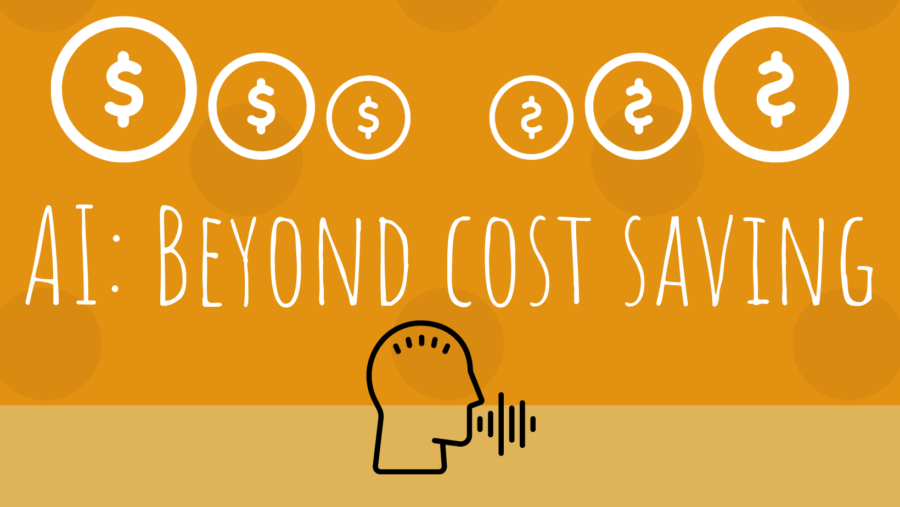Why do businesses invest in AI? Most people would say it’s to save cost. Cynics would say it’s to replace all humans with machines (which basically saves costs 🙄).

But as Brian Podolak of Vocodia tells VUX World, cost reduction is actually one of the last reasons his clients invest in AI.
Pump up the Volume
You might invest in AI to help cope with large volumes of customers. Perhaps your call centre experiences a sudden spike in sales leads and there simply isn’t enough staff to deal with them. Hiring more people doesn’t make sense if you only need them for a few days or weeks. Many contact centres will tell you of the administrative hassle that comes with hiring and training temp workers for Christmas.
Even if you could hire more people, it’s not as easy as it sounds. A recent study from Contact Centre Pipeline found that many contact centre managers have trouble hiring staff. AI can be used to help plug the gaps.
Scale
Some scenarios need cold-calling on a scale that simply can’t be achieved with humans alone. Imagine a huge crisis that engulfs a city – perhaps an earthquake or forest fires – with AI, it would be possible to call every single citizen in that city to give them safety advice within just a few hours.
Customer experience
And, of course, there’s the inevitable improvement in customer experience which comes from having a brand-consistent, always available, quick, self-service machine.
In a recent VUX World webinar with Raj Koneru, CEO, Kore AI; Raj quoted a study that his team conducted into customer expectations. Kore AI found that 61% of customers want quick resolutions to their problems. And 42% expect 24/7 support.
As many brand’s products and services begin to homogenise, customer experience is what you’re competing on. So it’s no wonder CX improvement is a core driver of AI initiatives.
Beyond metrics and units
Then you have the face that AI assistants can create new use cases that reveal different benefits beyond the tangible business metrics we’re used to. An AI can, ironically, encourage customers to talk more freely than they would with a human.
Users have been found to feel more comfortable giving personal information to a machine than to a real person. Saying “I’ve just lost my job” seems to have less social stigma when the listener is a machine that doesn’t judge. Here, AI opens up possibilities that humans can’t.
Sergeant Star, the US Army recruitment chatbot, was able to answer queries for potential soldiers that candidates wouldn’t dream of asking the recruitment officer (in this case, a real officer… a soldier). Things like “will I get killed if I join the army?”, “where will I be posted?”, “will I have to shower with other dudes?” – all genuine needs that went un-served before AI mediation.
Companies go to great lengths to ensure their staff communicate well, but maybe in some scenarios, a bot is better suited to the task by virtue of the fact that it’s not a human.
AI is not a magic bullet
If your only aim is to save money, you might find that there’s no magic bullet out there. AI is perceived as ‘cheap’ technology in the same way as social media was perceived as ‘free’.
Anyone who’s worked in social media knows that, of course, the medium is free, but the resources it takes to make it work certainly aren’t. The same is true for AI.
Yes, you can access DialogFlow or most other platforms for free, and you’ll find them to be reasonably priced on an ongoing basis. However, the additional skills, tools and capabilities you need to make it work is where most of the cost is.
If you approach it purely from a cost-reduction perspective, you’ll skimp on the inputs before you’ve had a chance to validate the outputs.
Also, many companies completely overlook how much resource is required to maintain and improve on a conversational AI system once it’s in production. Coming to the realisation that this thing might need 12 people to support it in 6 months can be enough to dissuade some from starting.
Don’t get me wrong, for some brands, it’s well and truly about cost reduction and you can justify the return on investment without a problem at all. However, it’s not all about cost.
Your why
Ask yourself what other issues can AI solve for you? Do you miss out on sales leads where there are demand peaks? Are callers reluctant to have conversations with staff? Are you missing untapped insight or value? Are you missing a channel somewhere? Do you have processes that can be improved? What can it do for your customer experience? Can it help you make up for lost revenue?
So what’s your reason?




